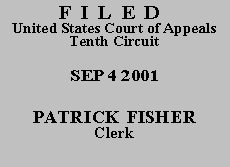

| UNITED STATES OF AMERICA,
Petitioner-Appellee, v. JEFF JACOBBERGER, Defendant-Appellant. |
|
Defendant Jeff Jacobberger appeals the sentence imposed pursuant to his guilty pleas to the charges of attempt to manufacture methamphetamine and possession with intent to distribute methamphetamine. He challenges the district court's estimate of the quantity of methamphetamine that could have been produced from the materials seized from his clandestine methamphetamine laboratory. He also argues that his rights to due process were infringed because the sentencing guidelines do not provide any particular criteria for estimating methamphetamine lab capabilities. We exercise jurisdiction pursuant to 28 U.S.C. § 1291 and reverse and remand for resentencing.
The charges against Mr. Jacobberger were based on the amount of methamphetamine that he could have produced from the materials seized. He challenged the findings in the presentence report regarding the estimated drug quantity. The district court held a hearing and received evidence on the estimated drug quantity from expert witnesses for both sides. The defense expert witness testified that the precursor drug materials seized from Mr. Jacobberger's lab would reasonably produce 150 to 156 grams of methamphetamine, using his recipe. He also testified that in general, it is reasonable to expect a yield of 70 to 80 percent, but a yield above 80 percent would be exceptional.
The government's expert witness testified that agents had obtained a yield as high as 90 percent in a lab with "slightly different modification[s]" from a typical clandestine methamphetamine lab using a common underground recipe. R. Vol. 2, at 50. He also stated that a yield of 72 to 80 percent was a reasonable yield in a clandestine laboratory.
The presentence report based its sentencing calculations on a 100 percent yield of 432 grams. That amount resulted in a base offense level of 34 (300 to1000 grams actual methamphetamine). After adjustments, Mr. Jacobberger's guideline level was 33, with a sentencing range of 168 to 210 months. The district court adopted the 432-gram figure, and sentenced Mr. Jacobberger to 168 months on each count, to be served concurrently.
The district court's findings of fact concerning the amount of drugs on which a defendant's sentence shall be based is reviewed for clear error. United States v. Ortiz, 993 F.2d 204, 207 (10th Cir. 1993). "We will not disturb this finding unless it has no support in the record or, after reviewing all the evidence, we are firmly convinced that an error has been made." Id. (quotation and citation omitted). We review de novo the district court's legal interpretation of the sentencing guidelines. Id. "The government has the burden of proving the quantity of drugs for sentencing purposes by a preponderance of the evidence." Id.
When evaluating the quantity of drugs for which a defendant may be held accountable, estimates are acceptable, as long as the estimate is supported by the facts. United States v. Richards, 27 F.3d 465, 469 (10th Cir. 1994); see USSG § 2D1.1, cmt. n.12. "[W]hen choosing between a number of plausible estimates of drug quantity, none of which is more likely than not the correct quantity, a court must err on the side of caution." Richards, 27 F.3d at 469 (quotation and citation omitted) (alteration in original). The factual question is not the theoretical maximum amount that could have been produced from the materials seized, but rather, the quantity a particular defendant could actually have produced. United States v. Havens, 910 F.2d 703, 706 (10th Cir. 1990).
The government concedes that the district court's use of a 100 percent yield figure is not supported by the evidence. It argues that the error was harmless, however, because the evidence could have supported a finding of a 70 percent yield, resulting in 302 grams of methamphetamine, thus keeping Mr. Jacobberger within the 300 to 1000-gram range for a base offense level of 34. But adopting the defense expert's opinion that Mr. Jacobberger could have produced 156 grams would result in an base offense level of 32.
It is apparent that the district court based its sentencing decision on a quantity of drugs not supported by the record, and it is therefore, clearly erroneous. Consequently, we remand for resentencing. We decline the government's invitation to find that the error was harmless because we cannot say that the district court would or must adopt the argument that because a 70 percent yield is not unreasonable, Mr. Jacobberger actually could have produced 302 grams. The district court is free to select any drug estimate that is supported by the facts, keeping in mind the admonition to err on the side of caution if none of the estimates is more likely than the others to be the correct quantity.
Accordingly, we hold that the government has not carried its burden of proving that Mr. Jacobberger could have produced a sufficient quantity of methamphetamine for a base offense level of 34. Because we remand for resentencing, we do not reach Mr. Jacobberger's due process argument.
Based on the foregoing reasons, Mr. Jacobberger's sentence is REVERSED, and the case is REMANDED to the district court with instructions to VACATE his sentence and resentence him in accordance with this order and judgment.
Entered for the Court
Circuit Judge
*. This order and judgment is not binding precedent, except under the doctrines of law of the case, res judicata, and collateral estoppel. The court generally disfavors the citation of orders and judgments; nevertheless, an order and judgment may be cited under the terms and conditions of 10th Cir. R. 36.3.